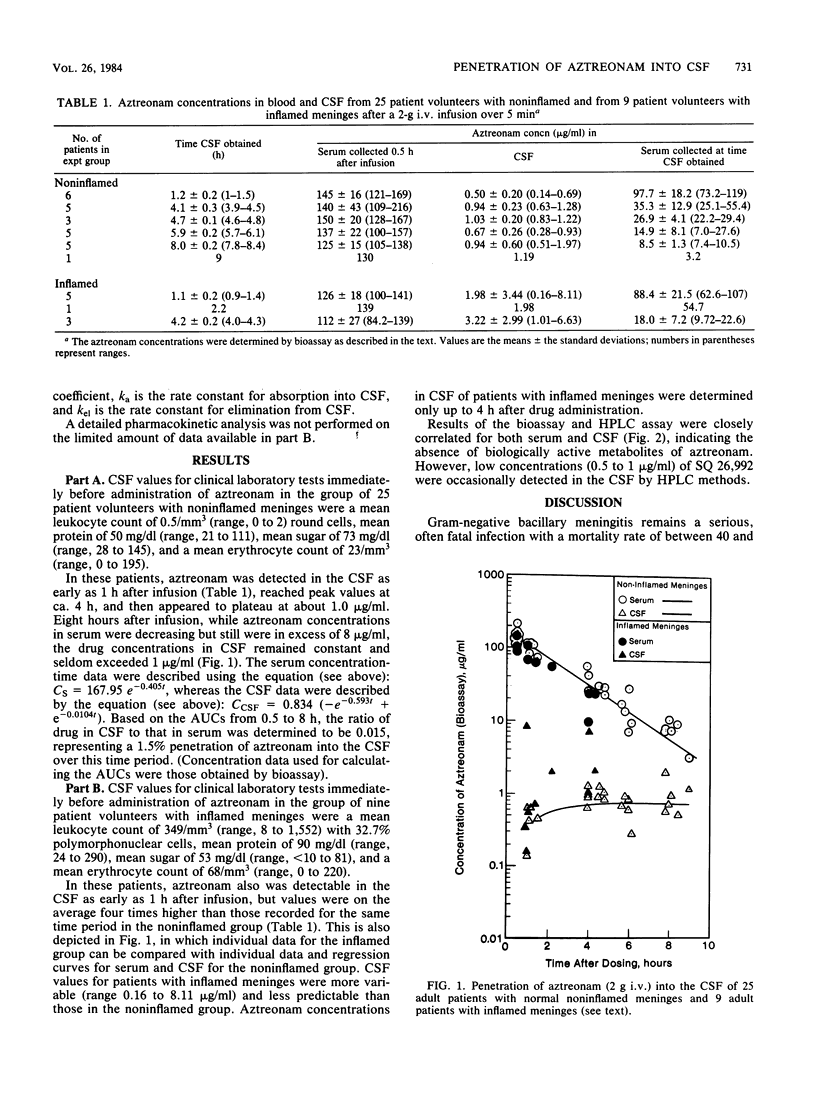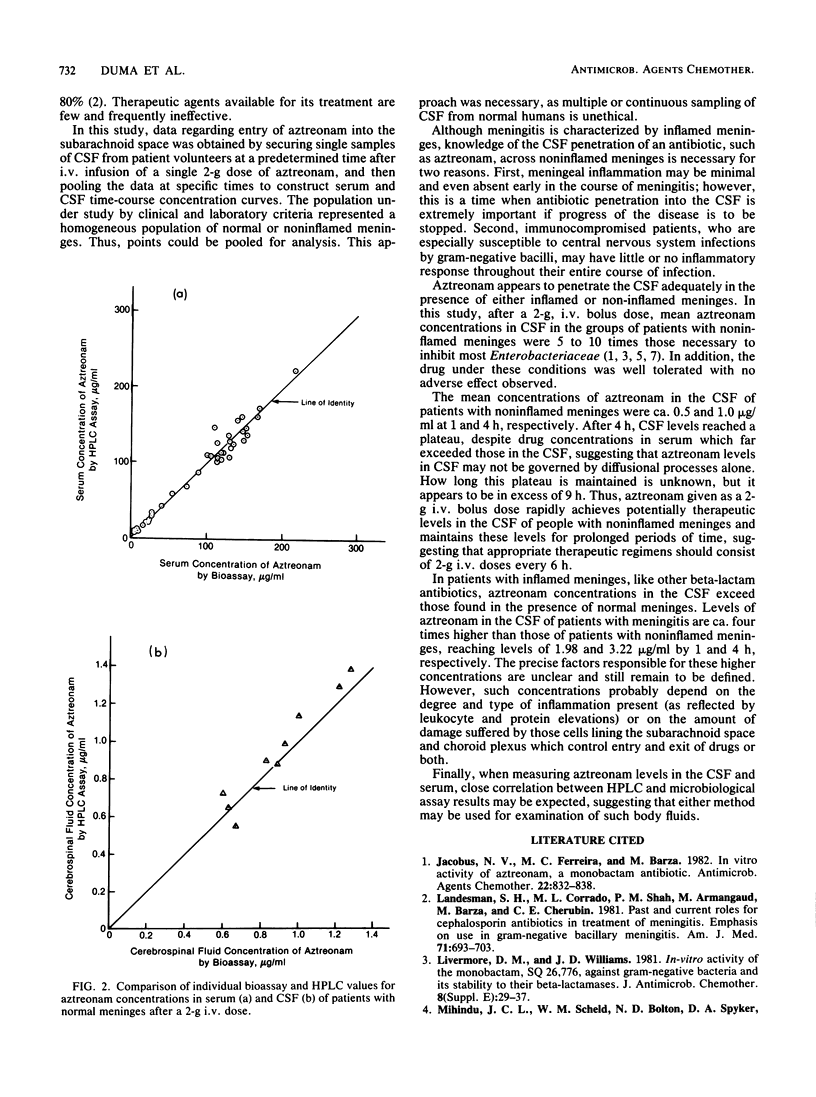Abstract
Aztreonam was administered as a single, 2-g intravenous dose to 25 patients with noninflamed meninges and to 9 patients with inflamed meninges. It was well tolerated and was detected in the cerebrospinal fluid at the initial sampling period at 1 h after the end of infusion. Aztreonam levels in the cerebrospinal fluid of patients with inflamed meninges were four times higher than those recorded for the same time period in patients with noninflamed meninges. Aztreonam concentrations in cerebrospinal fluid in the presence of normal and inflamed meninges exceeded the inhibitory and bactericidal concentrations for most gram-negative bacteria. Thus, a multiple-dose treatment regimen with 2-g intravenous doses every 6 h appears to be appropriate for clinical trials of aztreonam for the treatment of gram-negative bacillary meningitis which is caused by susceptible organisms.
Full text
PDF



Selected References
These references are in PubMed. This may not be the complete list of references from this article.
- Jacobus N. V., Ferreira M. C., Barza M. In vitro activity of azthreonam, a monobactam antibiotic. Antimicrob Agents Chemother. 1982 Nov;22(5):832–838. doi: 10.1128/aac.22.5.832. [DOI] [PMC free article] [PubMed] [Google Scholar]
- Landesman S. H., Corrado M. L., Shah P. M., Armengaud M., Barza M., Cherubin C. E. Past and current roles for cephalosporin antibiotics in treatment of meningitis. Emphasis on use in gram-negative bacillary meningitis. Am J Med. 1981 Oct;71(4):693–703. doi: 10.1016/0002-9343(81)90240-0. [DOI] [PubMed] [Google Scholar]
- Livermore D. M., Williams J. D. In-vitro activity of the monobactam, SQ 26,776, against Gram-negative bacteria and its stability to their beta-lactamases. J Antimicrob Chemother. 1981 Dec;8 (Suppl E):29–37. doi: 10.1093/jac/8.suppl_e.29. [DOI] [PubMed] [Google Scholar]
- Mihindu J. C., Scheld W. M., Bolton N. D., Spyker D. A., Swabb E. A., Bolton W. K. Pharmacokinetics of aztreonam in patients with various degrees of renal dysfunction. Antimicrob Agents Chemother. 1983 Aug;24(2):252–261. doi: 10.1128/aac.24.2.252. [DOI] [PMC free article] [PubMed] [Google Scholar]
- Neu H. C., Labthavikul P. Antibacterial activity of a monocyclic beta-lactam SQ 26,776. J Antimicrob Chemother. 1981 Dec;8 (Suppl E):111–122. doi: 10.1093/jac/8.suppl_e.111. [DOI] [PubMed] [Google Scholar]
- Scheld W. M., Brodeur J. P., Gratz J. C., Foresman P., Rodeheaver G. Evaluation of aztreonam in experimental bacterial meningitis and cerebritis. Antimicrob Agents Chemother. 1983 Nov;24(5):682–688. doi: 10.1128/aac.24.5.682. [DOI] [PMC free article] [PubMed] [Google Scholar]
- Strandberg D. A., Jorgensen J. H., Drutz D. J. Activities of aztreonam and new cephalosporins against infrequently isolated gram-negative bacilli. Antimicrob Agents Chemother. 1983 Aug;24(2):282–286. doi: 10.1128/aac.24.2.282. [DOI] [PMC free article] [PubMed] [Google Scholar]
- Sykes R. B., Bonner D. P., Bush K., Georgopapadakou N. H., Wells J. S. Monobactams--monocyclic beta-lactam antibiotics produced by bacteria. J Antimicrob Chemother. 1981 Dec;8 (Suppl E):1–16. doi: 10.1093/jac/8.suppl_e.1. [DOI] [PubMed] [Google Scholar]


